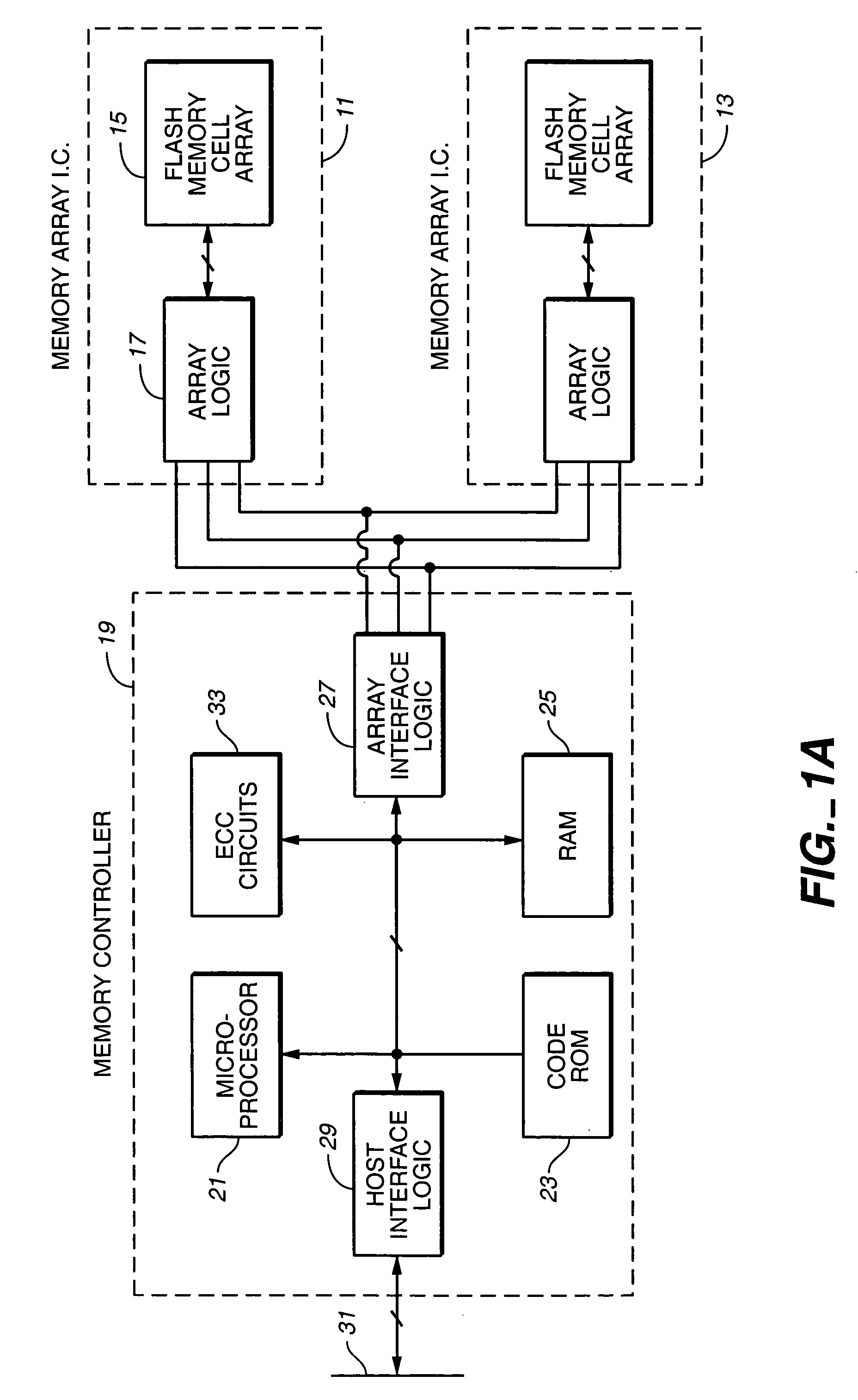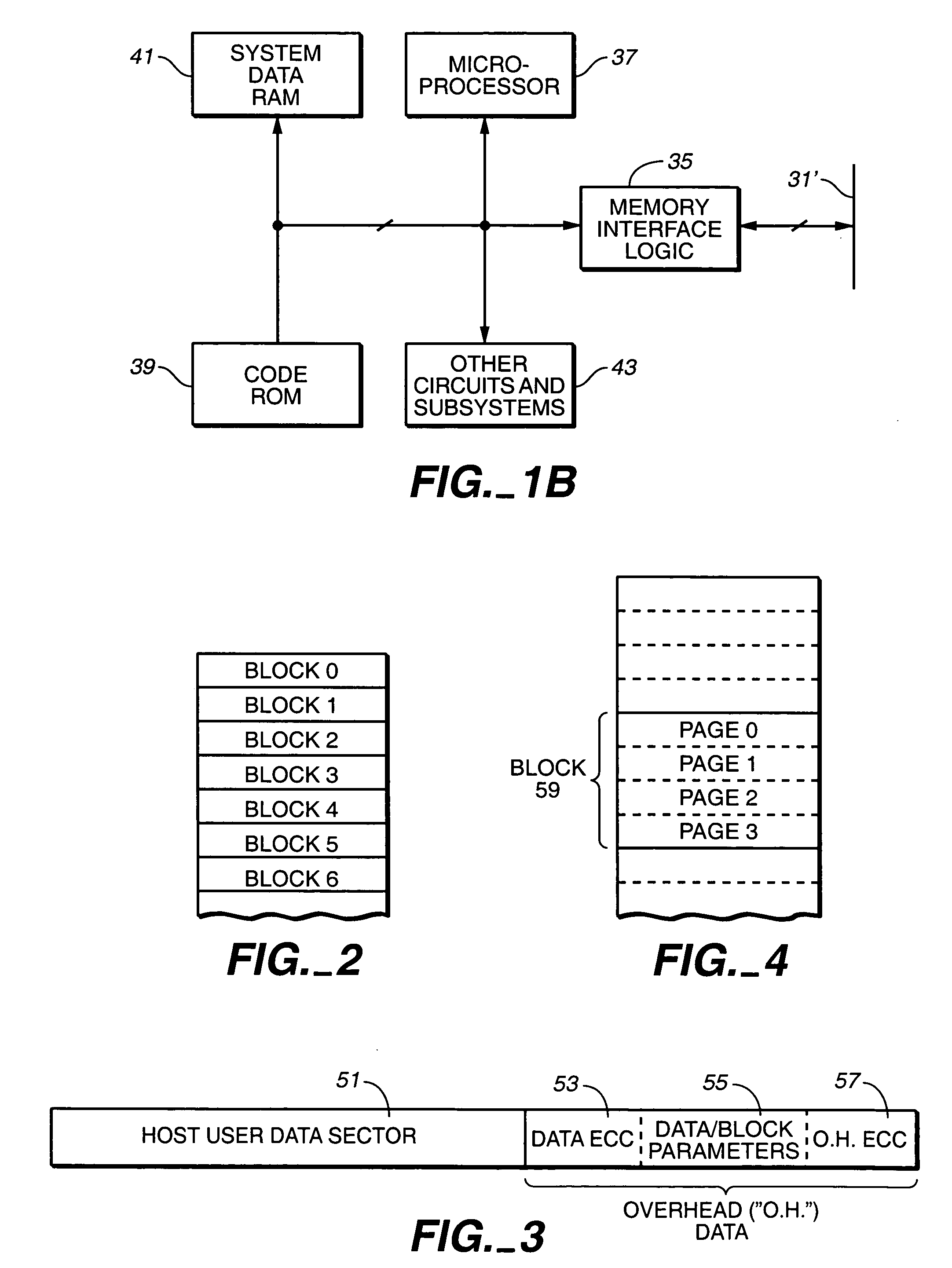Flash memory data correction and scrub techniques
a technology of flash memory and data, applied in the field of refreshing and correcting data, can solve the problems of increasing and achieve the effect of significantly reducing the possibility of such data disturbance and reducing the corruption of stored data over tim
- Summary
- Abstract
- Description
- Claims
- Application Information
AI Technical Summary
Benefits of technology
Problems solved by technology
Method used
Image
Examples
specific embodiment
of Scrub
A more specific embodiment of a scrub algorithm is illustrated in the flowchart of FIG. 9. Generally, the same processing steps as described previously are utilized but the implementation shown in more detail, including margin scrub reads that are described with respect to FIG. 10 for a four state system example (2 bits stored in each physical charge storage unit). Two entry points to the processing are shown in FIG. 9, at 115 when a scrub trigger event is detected and at 117 when a command to execute deferred scrubs is received.
In the step 115, the memory is monitored for a scrub trigger event, as discussed above for the step 91 of FIG. 8. Similarly, in a step 119, candidate memory cell unit(s) are determined for scrub, the same as described for the step 93 of FIG. 8. Then, similar to the step 95, a step 121 of FIG. 9 determines whether the scrub on any of the candidate units should be deferred because of other system operations that need to be performed at the time. If...
PUM
 Login to View More
Login to View More Abstract
Description
Claims
Application Information
 Login to View More
Login to View More - R&D
- Intellectual Property
- Life Sciences
- Materials
- Tech Scout
- Unparalleled Data Quality
- Higher Quality Content
- 60% Fewer Hallucinations
Browse by: Latest US Patents, China's latest patents, Technical Efficacy Thesaurus, Application Domain, Technology Topic, Popular Technical Reports.
© 2025 PatSnap. All rights reserved.Legal|Privacy policy|Modern Slavery Act Transparency Statement|Sitemap|About US| Contact US: help@patsnap.com



